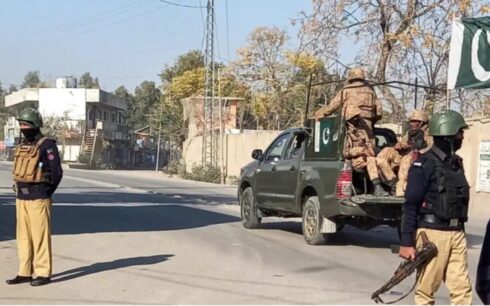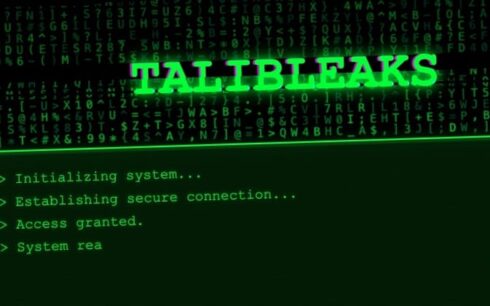Mullah Abdul Kabir, the Taliban’s deputy chief minister for political affairs, recently found himself in an awkward moment during an interview with a domestic media outlet. When asked when schools for girls beyond the sixth grade would reopen, he paused briefly, then let out a loud laugh—one of those rare moments where even the strictest interpretations of Taliban’s Sharia might frown upon such a display. Yet, Mullah Kabir couldn’t contain himself. After his hearty laugh, he mumbled something about girls’ schools that left listeners unclear about the real issue at hand. What they do remember, however, is that laugh—resonant and unsettling.
There’s an old Persian verse that often prefaces the works of Aziz Nesin, the renowned Turkish satirist: “My bitter laugh is more sorrowful than tears / I laugh because crying is no longer enough.” Whether Mullah Kabir’s laugh was an expression of despair or a political ploy to appear unruffled, we may never know. Was it an attempt to show composure, or did he find the question genuinely absurd?
Regardless, this laugh now stands as a text before us, open to interpretation. In the realm of political and literary theory, once a text is made public, it is no longer solely the author’s to control or explain. It becomes a subject for all to analyze, and even the original author’s interpretation holds no more weight than anyone else’s.
A laugh is an emotional signal, a reaction to various stimuli. In psychology, laughs are categorized to denote specific meanings—sometimes something genuinely amusing, sometimes an absurdity, or at times, a response to discomfort. Politicians often use laughter as a deflection or as a calculated response.
But laughter, like any other sign, is loaded with meaning. It is an audible expression that reveals a stance towards the current situation. Roland Barthes and Ferdinand de Saussure, the eminent semioticians, spent their lives deciphering the meanings behind symbols and signs, although they did not specifically focus on laughter as a symbol.
Psychologically, laughter can range from a simple reaction to a pleasant moment to a symptom of deeper psychological issues, making it a subject worth examining from multiple angles. Not all laughter is a sign of joy—sometimes it can be more sorrowful than tears or more enraged than cursing. Laughter is one of the most instantaneous expressions of body language, and its true nature is best captured in that first fleeting moment. Otherwise, the individual can quickly mask their true emotions behind the laugh.
Yet, thanks to modern technology, even the concealment of a laugh can be scrutinized. A single moment of laughter can be recorded, replayed, and examined from different angles, bringing us closer to its true meaning. Dictionaries define laughter as “a facial expression that usually shows joy, happiness, or mockery, often accompanied by a distinctive sound.” But Roland Barthes, the French semiotician, considered everything a sign. Instead of focusing solely on literary texts, Barthes would analyze everyday occurrences—photographs, posters, and gestures—as signs full of meaning.
Barthes’ approach, influenced by Ferdinand de Saussure’s structuralist linguistics, distinguishes between the signifier (the form) and the signified (the concept). The signifier could be anything—a sound, an image, or a gesture—that points to the signified, the underlying meaning, which is often shaped by societal conventions.
In this context, Mullah Kabir’s laugh is a sign—issued by an individual to an audience, it can conjure up various interpretations. Was it a laugh of joy or sarcasm? Or was it born of fear, attempting to mask true intentions? After all, diplomats often fake smiles to project confidence.
But what kind of laugh was Mullah Kabir’s? Was it one of joy and satisfaction—did the deputy chief minister truly find humor in the question of when girls’ schools would reopen? Or was it a sarcastic laugh, a dismissive scoff at the absurdity of the question?
Mullah Kabir himself may not have an answer, but Barthes would suggest that the answer lies within the text itself. The laugh was a bitter, painful one. He likely knows that his fellow Taliban leaders have made a grave political mistake that they will be forced to retract in the future, much like their earlier decrees against television and photography, which moved from absolute prohibition to widespread acceptance.
Sometimes people laugh out of frivolity, but it’s clear that Mullah Kabir has not yet reached such a level of absurdity. His laugh was primarily a bitter one, aimed at himself and his comrades. Perhaps he knows deep down the harm they have caused to themselves and their people. Or perhaps his laugh was born out of sheer ignorance or arrogance, mocking those who dare to question what they consider divine law.
The Taliban’s interpretation of Islam is intertwined with violence, prejudice, ignorance, misogyny, and human rights abuses. In their minds, the ethical teachings of Islam have been overshadowed by the desire to kill infidels, oppress women, and degrade human dignity.
Through this lens, the Taliban seeks to transform 40 million people into obedient subjects under their command.
Amir Nekaeen is a seasoned Afghan writer and journalist whose work has been published in both global and national media outlets.
The opinions expressed in this article are those of the author and do not necessarily reflect the views of Amu.





